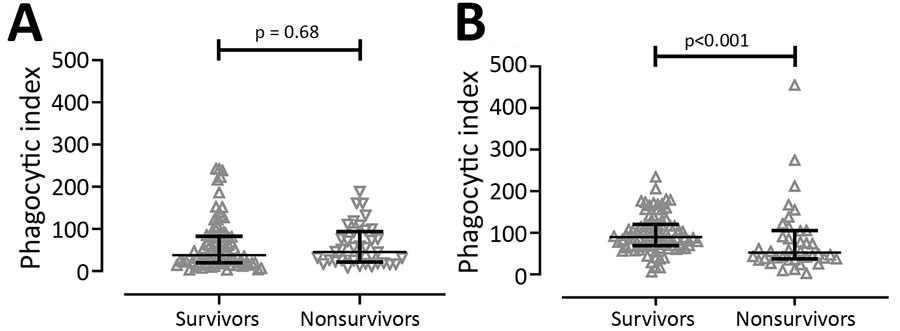Volume 27, Number 2—February 2021
Research
Role of Burkholderia pseudomallei–Specific IgG2 in Adults with Acute Melioidosis, Thailand
Figure 2

Figure 2. Comparison of antibody-dependent cellular phagocytosis (ADCP) activity between 82 survivors and 38 nonsurvivors of acute melioidosis, Thailand. ADCP activity was tested by using U937 (A) and THP-1 (B) human monocytic cell lines. Heat-inactivated serum samples were incubated with live fluorescein isothiocyanate–labeling Burkholderia pseudomallei before transfer to the cells, and the percentage of B. pseudomallei uptake by cells was analyzed by flow cytometer. We used the Mann-Whitney U test for statistical comparison.
Page created: December 14, 2020
Page updated: January 23, 2021
Page reviewed: January 23, 2021
The conclusions, findings, and opinions expressed by authors contributing to this journal do not necessarily reflect the official position of the U.S. Department of Health and Human Services, the Public Health Service, the Centers for Disease Control and Prevention, or the authors' affiliated institutions. Use of trade names is for identification only and does not imply endorsement by any of the groups named above.